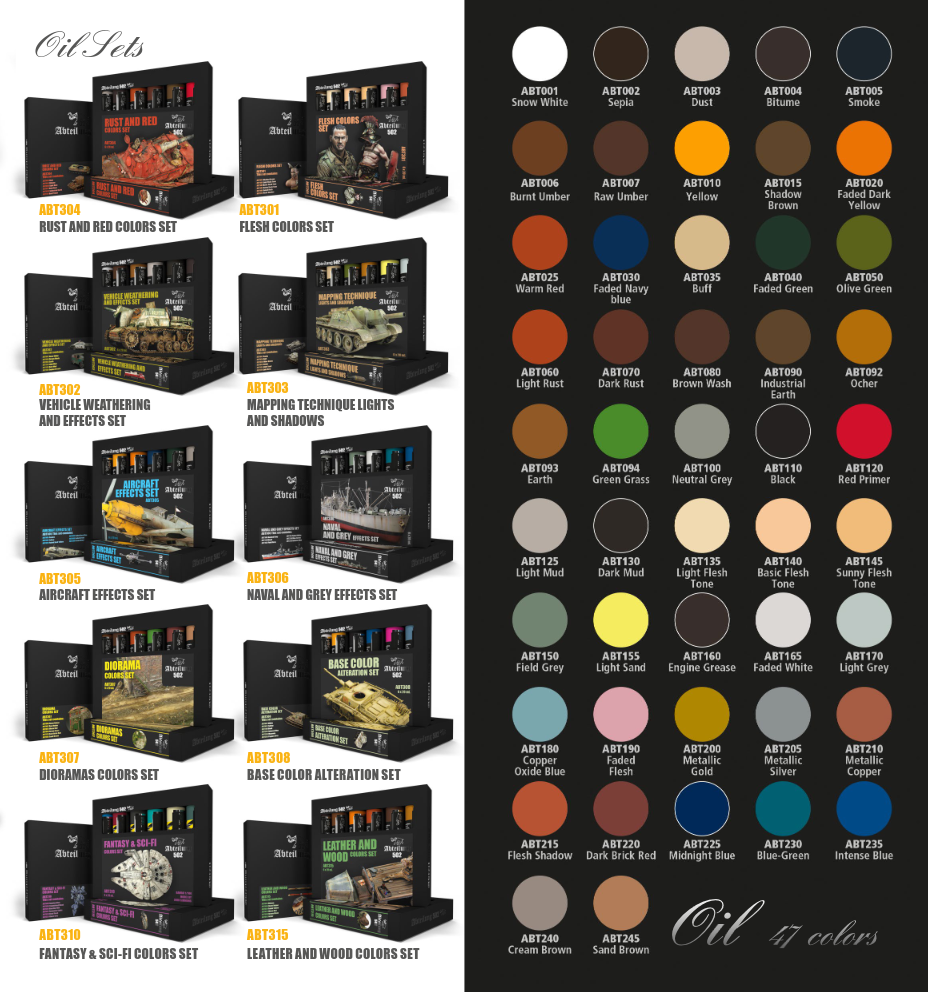
Skill Level: Advanced
Prerequisite: Basic Understanding of Colour Theory
Read Time: 10 minutes
Additive and Subtractive Oil Paint Swatch Modulation and Colour-Mapping
Ode to Oils: Old School – New School Techniques
In Advanced AFV Model Finishing and Weather Effects 2.0, Part №.2, we previously covered the basic concepts of different finishing and weathering approaches.
The use of oils has been referred to as old school, implying it’s an old technique, perhaps even out of fashion. In that same vein, it can be argued that the pigments we use today, which have been used for eons, are also old-school.
The truth is that oil paint works and is renowned for its open-time and blending characteristics far surpassing those of acrylics. Acrylics, by comparison, lock up within seconds, thus preventing further finessing.
Oils are additive and subtractive, workable for hours. Some things in this life just work well and are timeless, oils being one of them.
The palette example below uses Abteilung 502 Oils: Industrial Earth, buff, olive green, and light rust to warm the tone.
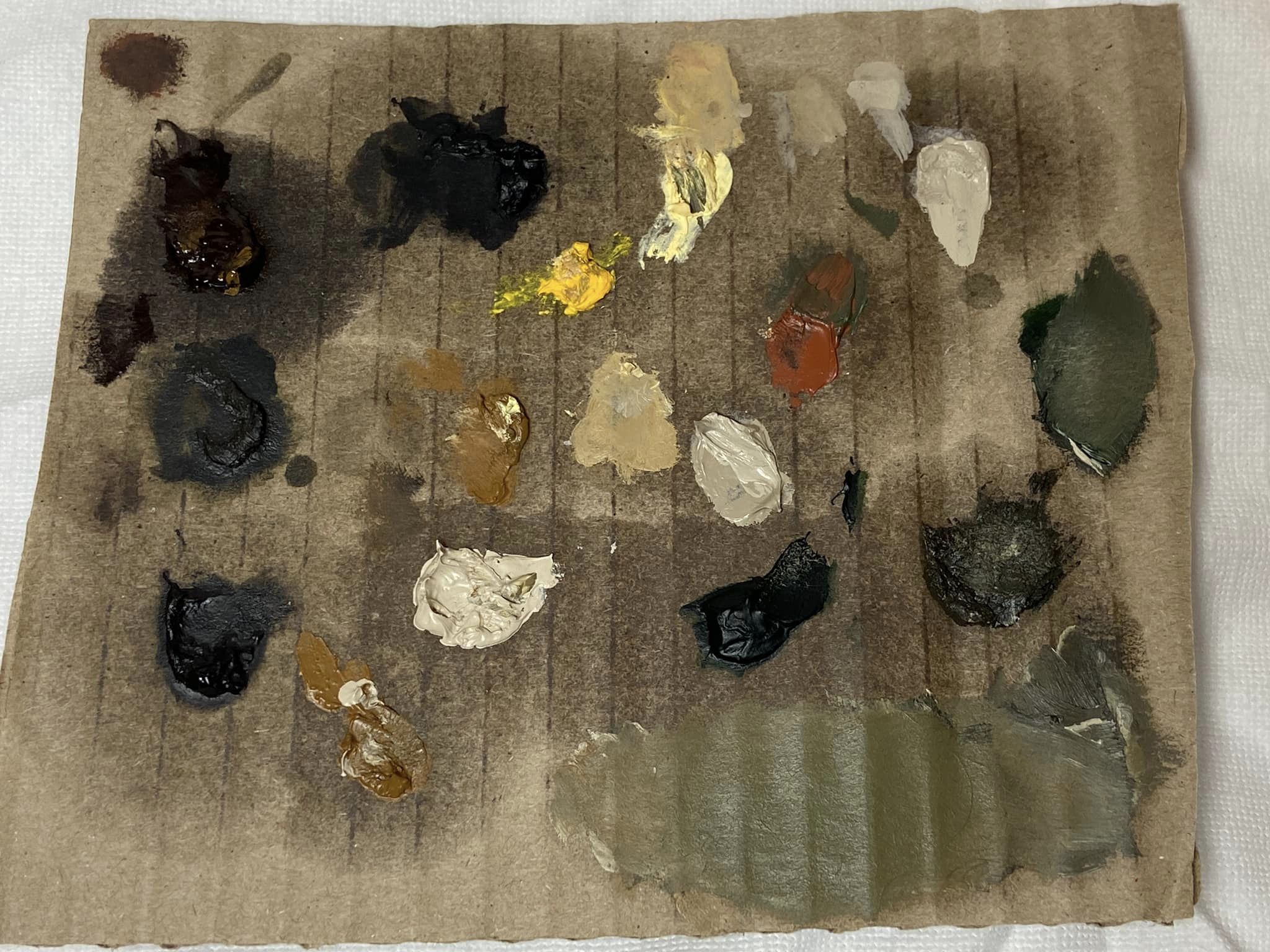
Colour of Mud: Oil Paint Colour Modulation
Modern science tells us that the colour radiation we see behaves differently when not observed. This is another mystery to add to the dark art of colour.
I’m a master of mistakes. I can’t tell you how many times I’ve found out something doesn’t work. I took to the air, flying water-based acrylics for colour modulation, and quickly crashed and burned shortly after takeoff. Water-based acrylics work in some instances but are too time-limited and lock up within minutes, with no further modification possible. By comparison, oil paints can be worked and reworked until the cows come home.
💡 For those interested in oil paint colour modulation, invest in the Abteilung 502, Mastering Oils book.
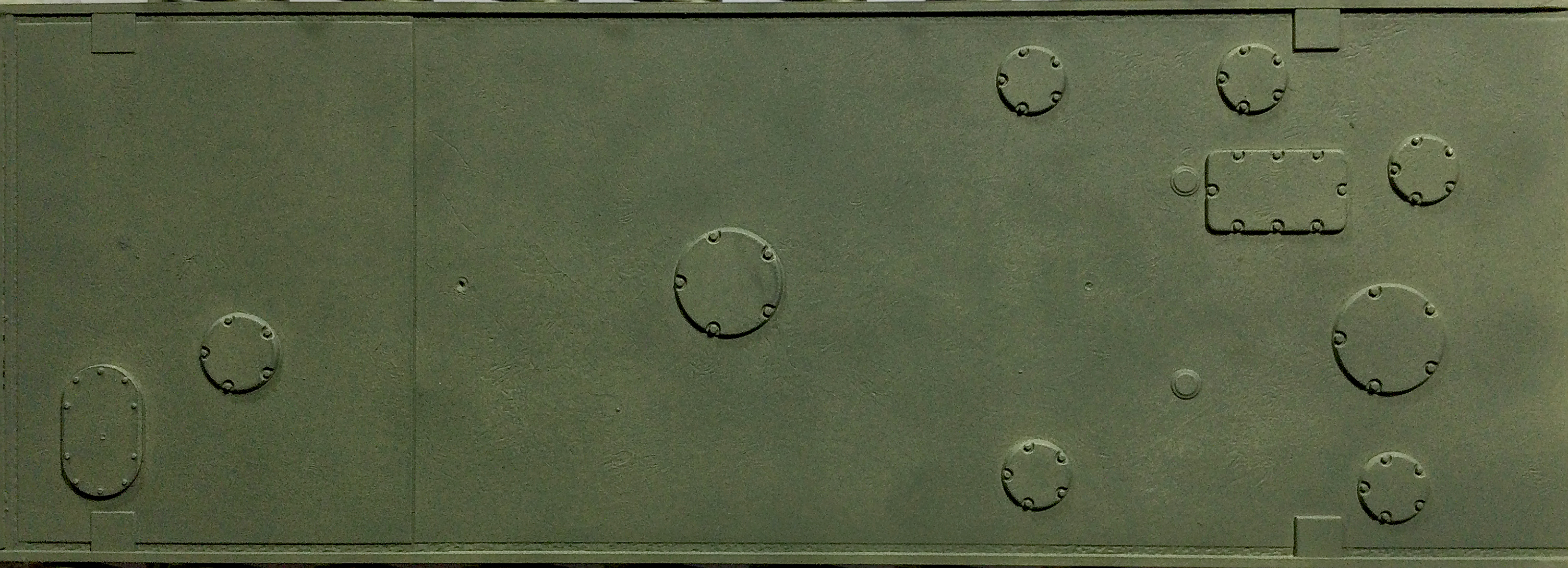
Advanced Translucent 3G Acrylic Mottling and Modulation
Further to using the Oil Swatch 2.0 method, colour mottling and modulation are possible using translucent 3G Acrylics over mottled Zenithal Colour Mapping. Airbrush proficiency is a must, including understanding how to optimally dilute the acrylic paint and use a MAC Valve. This technique will be discussed at length in a future article.
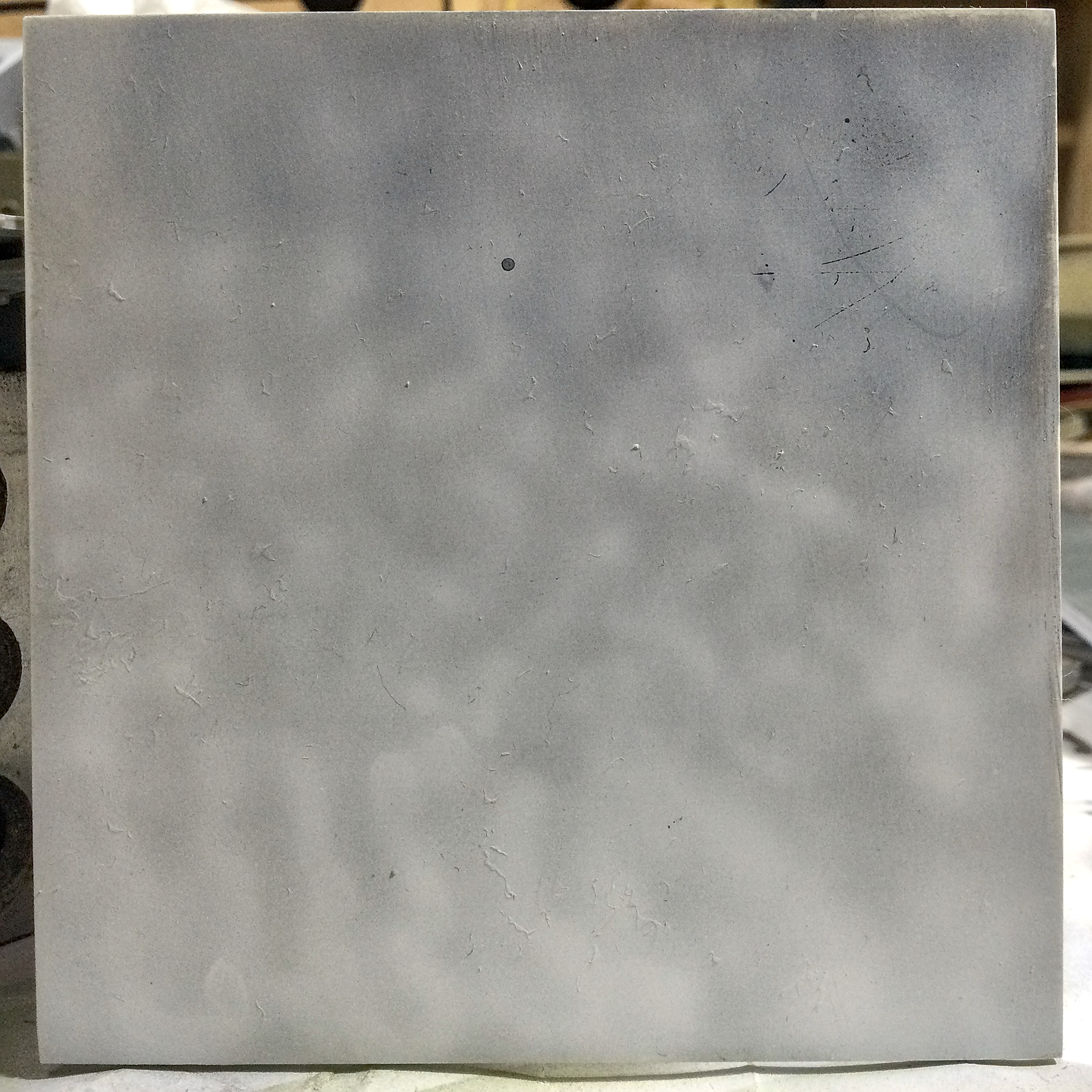
Oil Paint Colour Choice Anticipations
It’s surprising the colours that are used, some we would never have guessed. Flying by the seat of our pants and guessing at what oil paint colours to use only ends up with colours turning to mud. To manage the expectations and limitations of our skill sets, we should follow the tutorials exactly in Abteilung 502, Mastering Oils book.
We don’t screw around with a cooking recipe; the same holds true with oil paint colour modulation. There is no need to reinvent the wheel when the hard work has been shouldered by the author. By following the instructions step-by-step, we are assured of success.
Dabbing for the Sake of Dabbing: Oil Colour Modulation
Thinking We Know vs Understanding Why
Applying any colour rather than specific colours has a precise reason… the science of colour. Mixing colours is the same as adding ingredients to a recipe. Just because something is available doesn’t mean it’s the right choice. It becomes universally applicable once we understand what colour grouping works with what base colour.
In the pictures below, we see an example of what seems to be a good idea for understanding what colours produce a desired outcome for the base colour in question. There is a difference between guessing what works as opposed to understanding what works.
What Oil Paint Colours Work With Olive Green or 4BO (AFV Greens) Base Colour
Colour Groups for AFV, Aircraft, Ships and Submarines
In the upcoming article further colour combinations are explored.
Colour Swatch Concentration
Experiment to find the desired look on a test styrene card painted with the base colour. Once the desired effect is achieved, transfer the strategy to the kit.
The advantage of working with oils is that if we make a mistake, which we will, it’s super easy to correct with mineral spirits and reapply. Oils remain workable for hours and even possibly well into the next day.
There is a huge difference between making a mistake with the correct combination of colours as opposed to compounding mistakes using the wrong set of colours. Garish is garish.
Colour Wheel
We don’t need to know the nuances of the colour wheel when we understand the basic colour group. Olive Drab or 4BO colour grouping will work with any AFV Green and British Khakis. Enjoy the chromatic variation in oil paint hues.
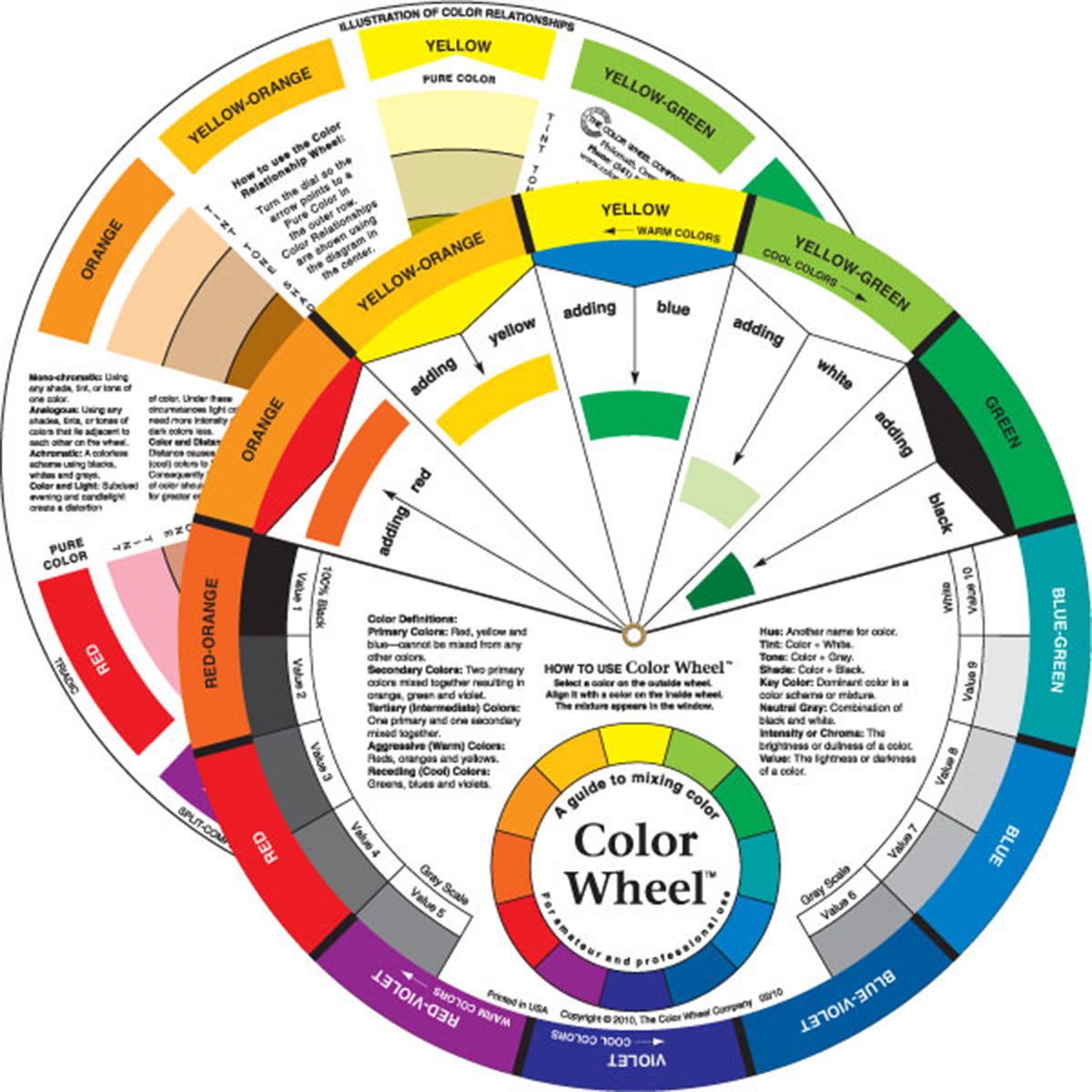

Mineral (White) Spirits: Working with Oil Paint
Mineral (White) Spirits and Enamel Thinners are two different solvents. When working with oil paints, use only Mineral Spirits or Odorless Mineral Spirits from AK INTERACTIVE, AMMO, and Humbrol.
What’s On The Label
Mineral spirits, or White Spirits, as they’re known to our European friends, are one and the same. It’s a Stoddard solvent. If the label says anything else other than Mineral Spirits, it’s a blend—do not use it.
Enamel Thinner or Paint Thinner
Enamel Thinner and Paint Thinner are a blend of petroleum products that are highly likely to dissolve underlying paint due to hot solvent aggressiveness and the combined mechanical action of a paintbrush on the surface.
Enamel Thinner or Paint Thinner may smell like Mineral Spirits, but it is a blended formulation with hot solvents that will likely dissolve your paint job.
⚠️ The label may specify “for oil paint”; don’t buy it. It’s not suitable for our purposes.
Mineral (White) Spirits
Mineral (White) Spirits are pure petroleum distillates that will not dissolve your underlying paint.
Normal vs Odourless Mineral Spirits
Regular mineral spirits have a diesel-like smell due to their sulphur content. Odourless Mineral Spirits are more refined with the sulphur content removed.
Emulsification
Depending on the quality of your oil paint, regular mineral spirits emulsify oil paint better than highly refined, odourless mineral spirits.
Don’t buy it if the label doesn’t say Mineral Spirits or Odourless Thinner. TAMIYA Enamel Paint Thinner X-20 🟦 (Blue Cap) is the exception.
🚧 Always test mineral spirit thinner over previously applied paint and clear coat on a styrene test card to emulate the project surface. 🚧
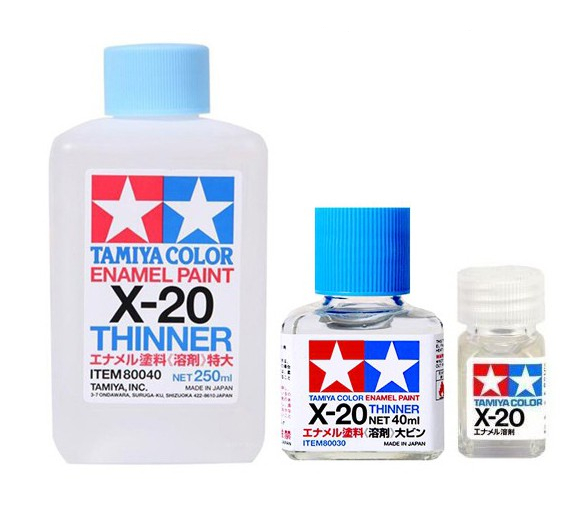
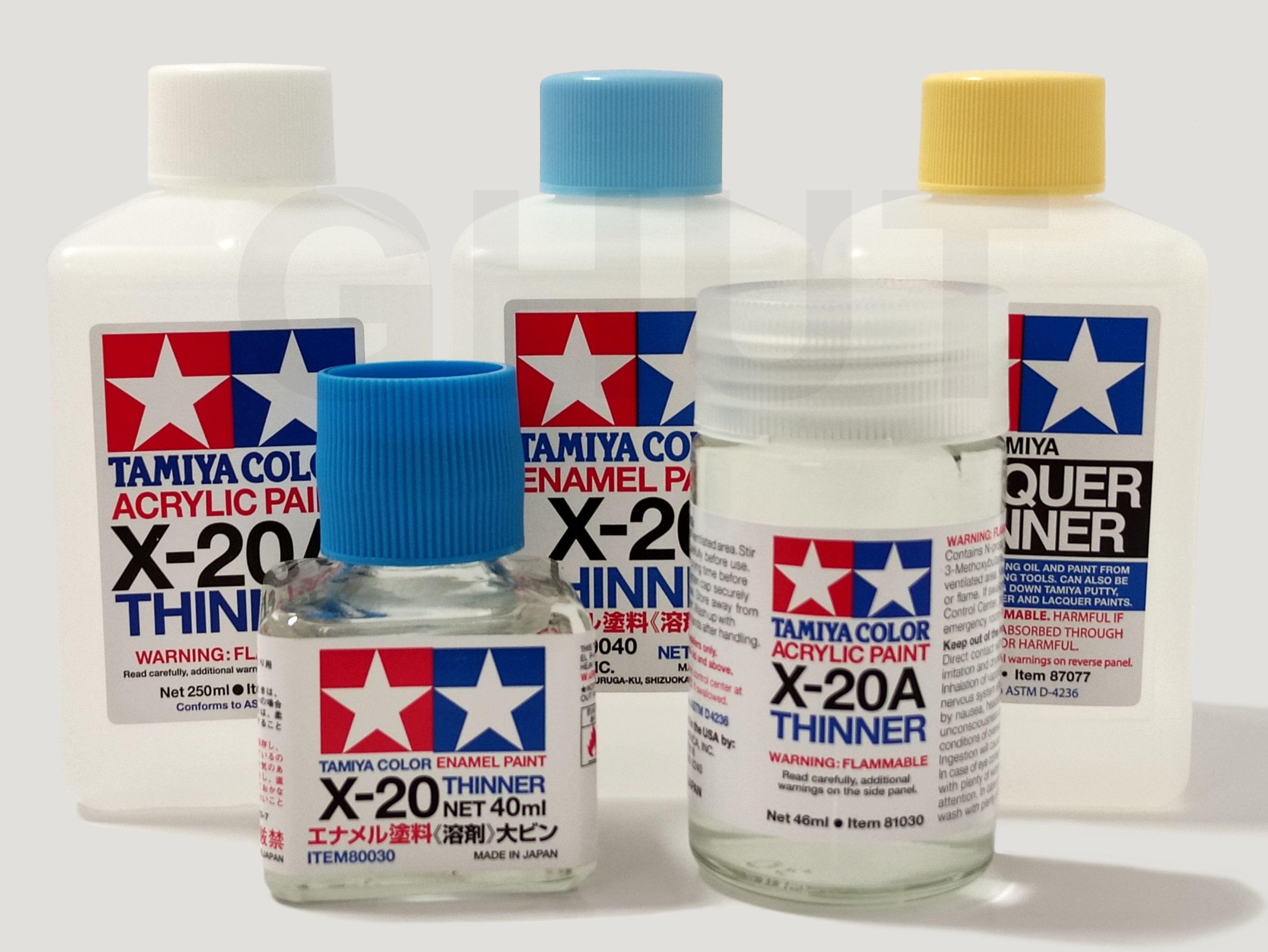
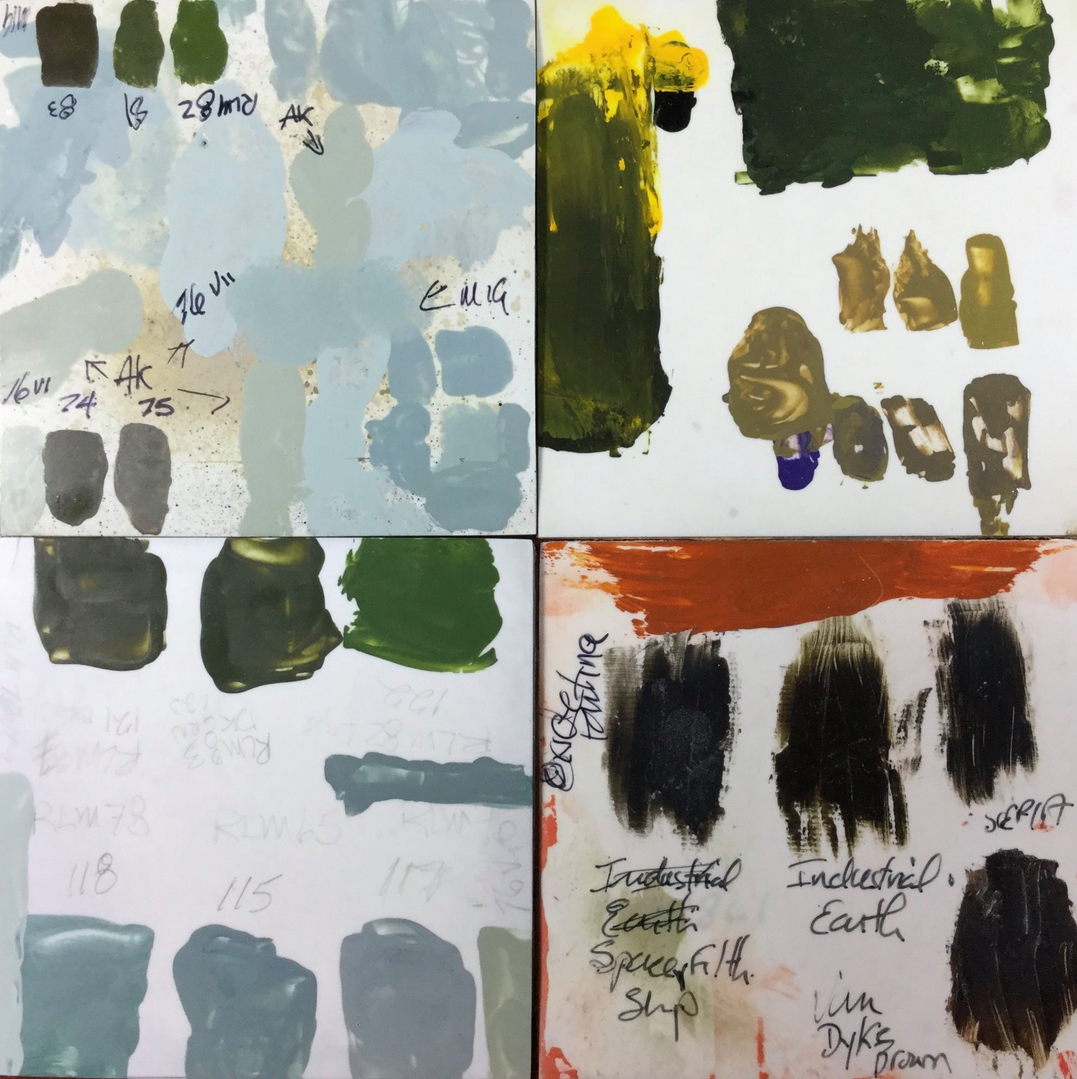
Oil Paint Swatch Colour-Mapping: Colour Mottling
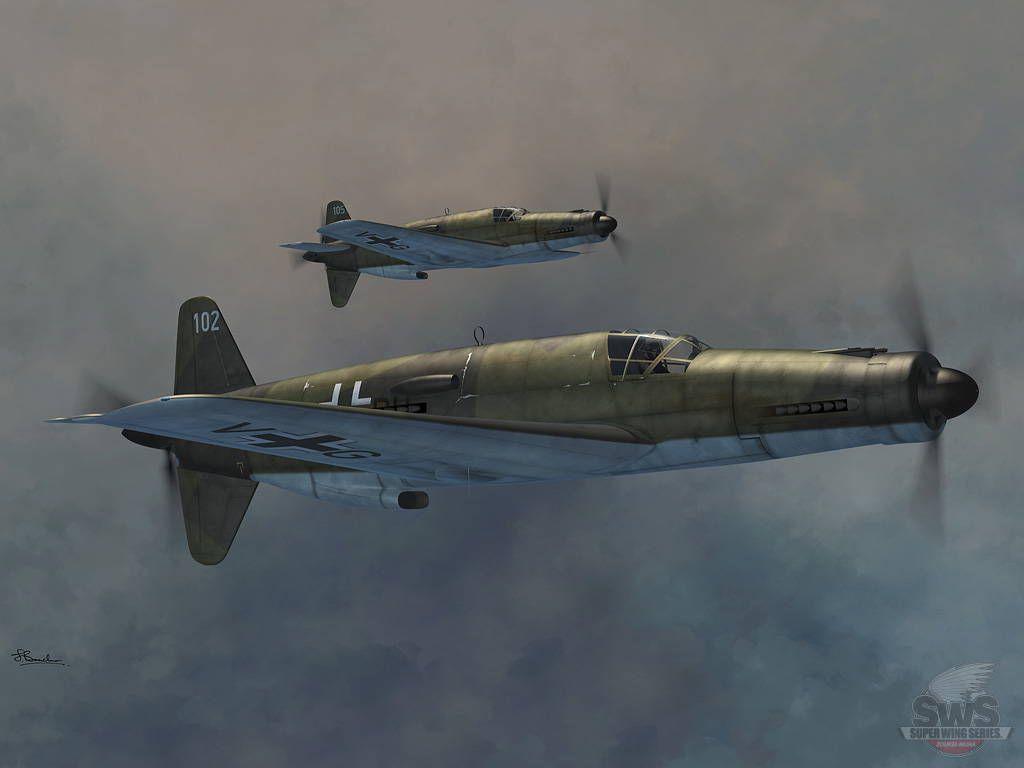
Additive and Subtractive Natrure of Oil Paint Swatch Colour-Mapping
Oil paint is considered both an additive and subtractive medium due to its capacity for layered application and removal. In its additive capacity, oil paint allows artists to superimpose colours and textures to achieve depth and complexity in their compositions. This layering technique facilitates the gradual construction of visual elements. Conversely, in its subtractive capacity, advanced scale modellers can utilize various tools to eliminate or scrape away paint layers, unveil underlying strata, create specific textures, or achieve desired visual effects. This dual characteristic of oil paint affords advanced scale modellers a broad spectrum of options for manipulating their artistic creations and exploring diverse styles and techniques.
When working on scale models, oil paint colour swatch modulation can significantly add depth and realism to the finished piece. By selectively applying lighter and darker shades of the base colour, you can create the illusion of light and shadow, making the model look more dynamic and lifelike. This technique requires a steady hand and some practice, but the results can be impressive.
When considering the application of oil paint colour swatch modulation on scale models, it is essential to begin by applying a uniform base swatch colour pattern of the appropriate colours to the selected areas on the model, ensuring thorough drying before proceeding. It is crucial to consider the positioning of light sources to effectively determine the areas where highlights and shadows should be strategically placed to achieve the desired effect.
To create the sab modulation effect, it is necessary to meticulously mix lighter and darker shades of the base colour to produce the intended highlights and shadows. These variations should be carefully applied using a fine brush, with the lighter shades targeted towards areas exposed to light and the darker shades positioned where shadows naturally occur. The process demands precision and attention to detail to achieve a realistic and lifelike appearance.
Subsequently, blending the modulated colours seamlessly is imperative to create smooth transitions between the highlights and shadows. Feathering the edges of the colour transitions will contribute to a more polished and professional finish. Finally, the model can be further enhanced with additional detailing, weathering effects, and finishing touches to complete the overall look.
It is important to note that mastering this technique requires persistence, practice, and a keen eye for detail. Through dedicated practice and refinement, oil paint colour modulation can significantly elevate scale models’ visual impact and realism.
To use oil paint colour-mapping modulation on scale models, you can follow these general steps:
Start with a base coat: Apply a solid base coat of the desired colour using lacquer or water-based acrylic paint to the entire model and let it dry completely. Apply a light gloss clear protective coat.
Identify light sources: Determine where the light will be hitting the model to understand where the highlights and shadows should be.
Mix lighter and darker shades: To create the highlights and shadows, mix lighter and darker shades of the base colour. These can be applied directly from the tube or mixed on a palette.
Apply modulation: Using a fine brush, apply the lighter shades to the areas where the light would naturally hit the model and the darker shades to the places where shadows would fall.
Blend and feather: Blend the modulation colours to create smooth transitions between the highlights and shadows, feathering the edges for a seamless effect.
Finishing touches: Once the modulation is complete, you can add weathering, detailing, and finishing touches to complete the model.
Remember, practice makes perfect, so don’t be discouraged if your first attempts don’t turn out exactly as you’d hoped. Keep experimenting and refining your technique to achieve the desired results. Good luck!
💡 Oil paint cures by oxidation, not evaporation. Oils may take several days or more to cure completely, so plan accordingly.
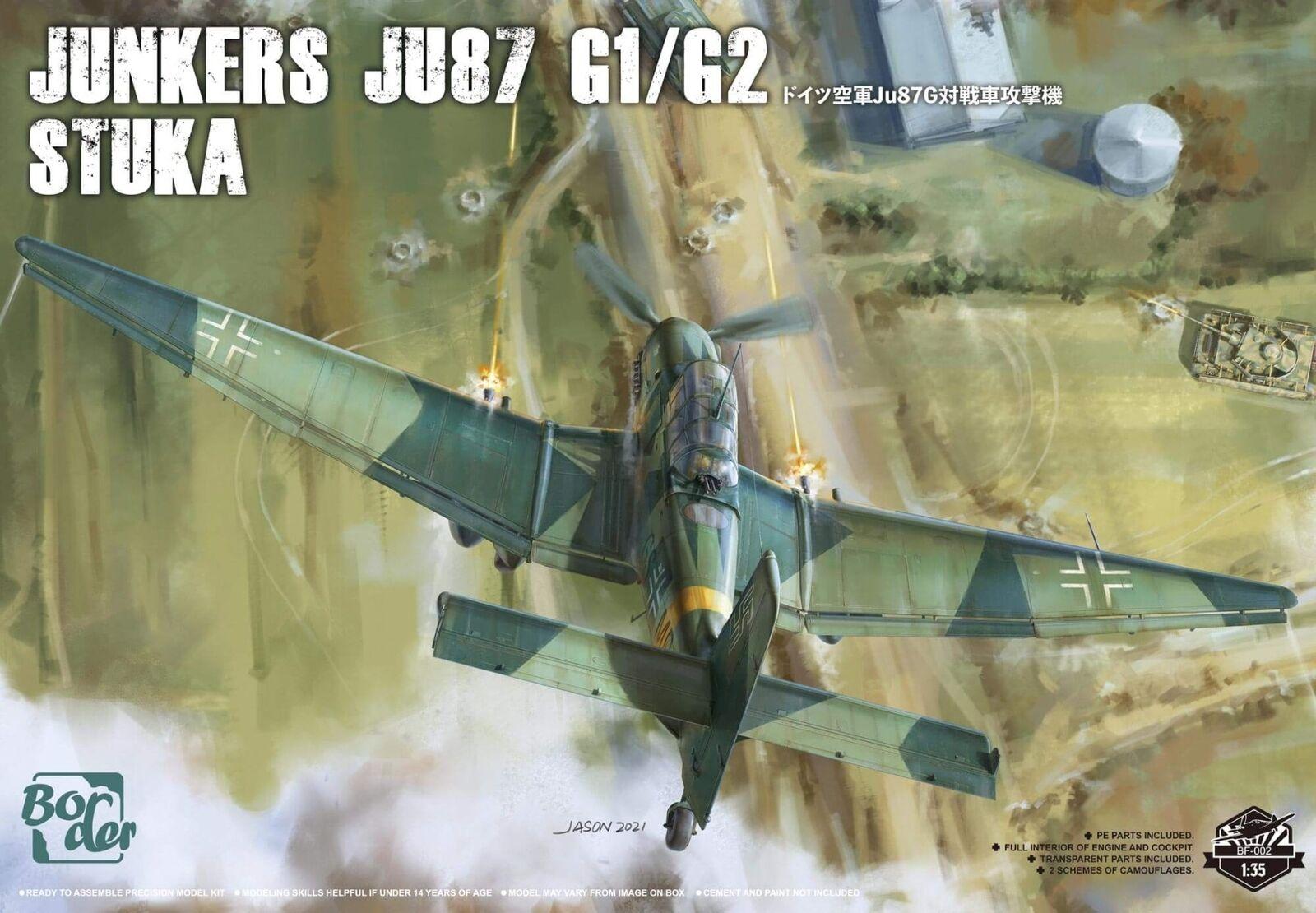
Lacquer Paint Airbrush Mottling: Advanced Techniques
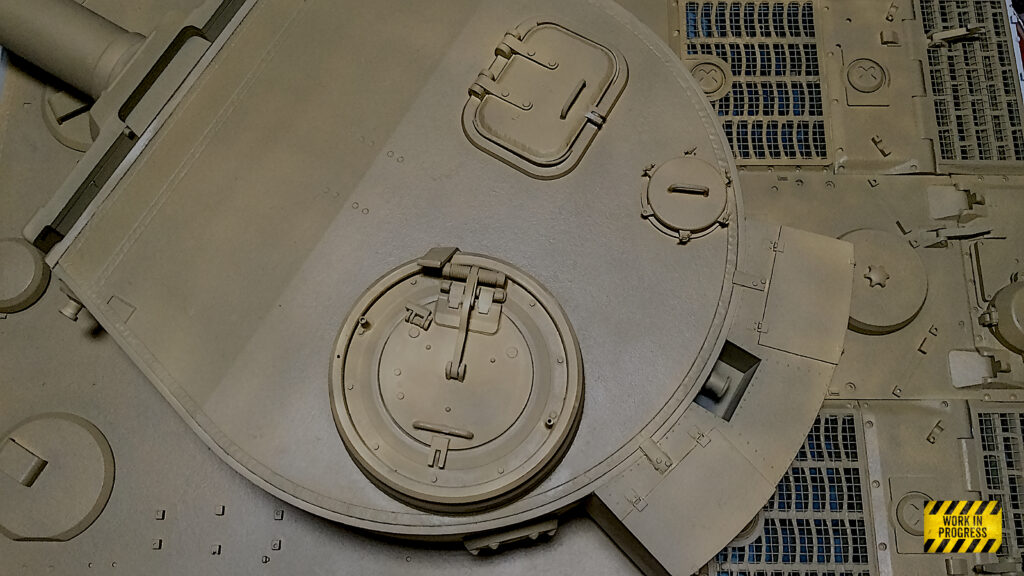
Airbrushing lacquer paint requires a different approach than mottling and modulating water-based acrylic paint. In an upcoming article, we will explore translucent paints in depth.
In Part №.4, the Oil Swatch Colour application and techniques will be unpacked further to help readers better understand the process and how to accomplish it successfully.
Advanced AFV Model Finishing and Weather Effects 2.0: Part №.2
How-to Prepare Military AFV Models for Weathering and Protective Clear Coats: Part №.1
James Wooldridge is An enthusiastic scale modeller, researcher, amateur historian, and contributor to scale modelling sites, including Scalemates. He is an active and progressive Facebook Group Expert, Presenter, and Scale Modelling Club Video Host. James is also the Executive founding member and KSM Group Expert – Kawartha Lakes Scale Modellers

